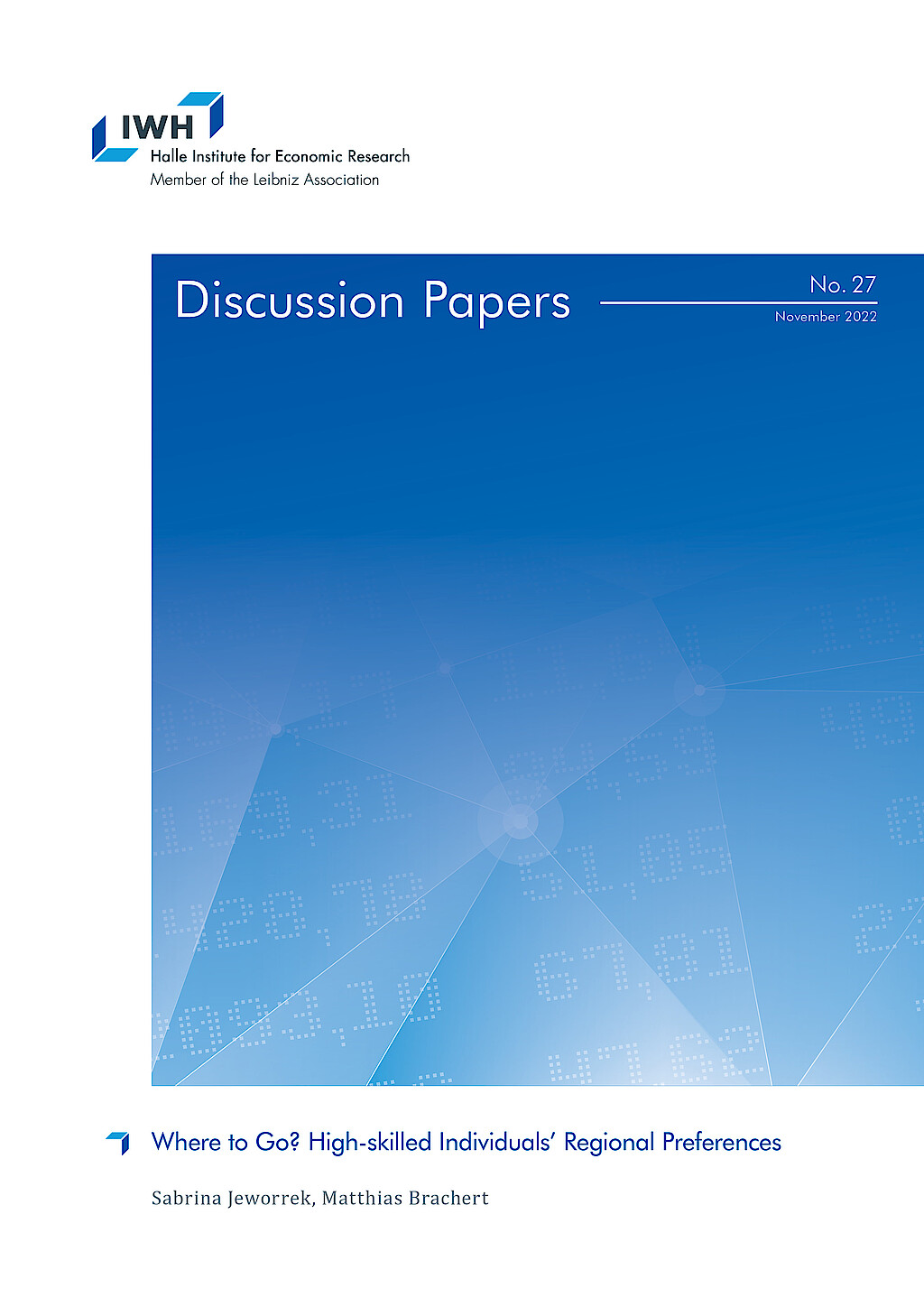Inhalt
Seite 1
Urbabisierung und StudieSeite 2
StudienergebnisseSeite 3
FazitSeite 4
Endnoten Auf einer Seite lesenEndnoten
1 Vgl. Berechnung auf Ebene der Gemeinden gemäß Grad der Verstädterung nach Klassifikation von Eurostat. Die Daten für die Berechnung stammen aus dem Gemeindeverzeichnis mit Stand 31.12.2021.
2 Vgl. Glaeser, E.; Saiz, A.: The Rise of the Skilled City. Brookings-Wharton Papers on Urban Affairs 2004, 47-105.
3 Vgl. Dauth, W.; Findeisen, S.; Moretti, E.; Suedekum, J.: Matching in Cities, in: Journal of the European Economic Association, Vol. 20 (4), 2022, 1478-1521.
4 Vgl. Chapman, D.; Uggerslev, K.; Carroll, S.; Piasentin, K.; Jones, D.: Applicant Attraction to Organizations and Job Choice: A Metaanalytic Review of the Correlates of Recruiting Outcomes, in: Journal of Applied Psychology, Vol. 90 (5), 2005, 928-944.
5 Vgl. Arntz, M.; Brüll, E.; Lipowski, C.: Do Preferences for Urban Amenities Differ by Skill?, in: Journal of Economic Geography, Vol. 23 (3), 2023, 541-576.
6 Vgl. Caprano, J.: Recruiting Generation Y for the Backbone of Economy: Organizational Attractiveness of Small, Family Owned, and Rural Firms, in: Junior Management Science, Vol. 4 (4), 2019, 493-523.
7 Vgl. Jeworrek, S.; Brachert, M.: Where to go? High-skilled Individuals’ Regional Preferences. IWH Discussion Papers 27/2022. Halle (Saale) 2022.
8 Vgl. Bundesinstitut für Bau-, Stadt- und Raumforschung (BBSR): Laufende Stadtbeobachtung – Raumabgrenzungen. Stadt- und Gemeindetypen in Deutschland. Webseite, Zugriff am 27.10.2022.







